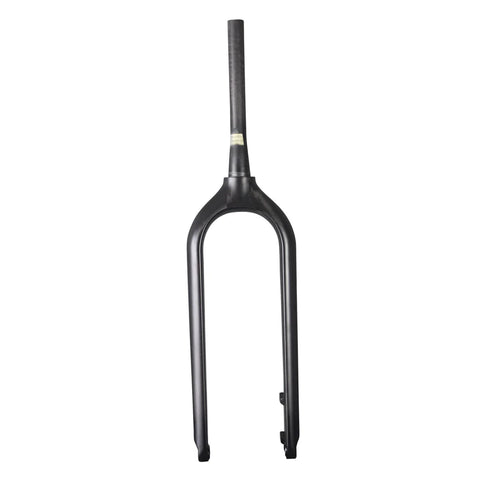Many fat bikes don't come with a front suspension fork, as they were initially designed for snow and sand where suspension wasn't necessary. However, as the use of fat bikes has expanded beyond their original purpose, more riders have begun to opt for suspension forks. While wide, low-pressure tires already absorb a lot of bumps, a front suspension fork can make a big difference when riding on rough terrain with rocks and roots.
 120mm Travel Front suspension Fat Bike Fork
120mm Travel Front suspension Fat Bike Fork
However, there are some drawbacks to using a suspension fork on a fat bike. Firstly, it adds extra weight to the already heavy bike. Secondly, they can be quite expensive; a high-quality fork such as RockShox Bluto can cost up to $700.
Alternatively, one can opt for a carbon rigid fork, which is much lighter and can absorb vibrations better than steel or aluminum forks. Carbon forks are also more affordable, with some available for less than a quarter of the price of a full suspension fork.
Ultimately, the choice between a suspension fork and a carbon rigid fork depends on the rider's needs, budget and the terrain they plan to ride on. If bikepacking is on the cards, a suspension or carbon fork upgrade might be unnecessary. However, if you plan on riding your fat bike on rough terrain with rocks and roots, a suspension fork might be the best option. On the other hand, if you're riding mostly on snowy fields in winter, a carbon fork is the better option.
Remember that fat tires provide grip and traction, while suspension is for control. They serve different purposes but can be used together to optimize your riding ability.

